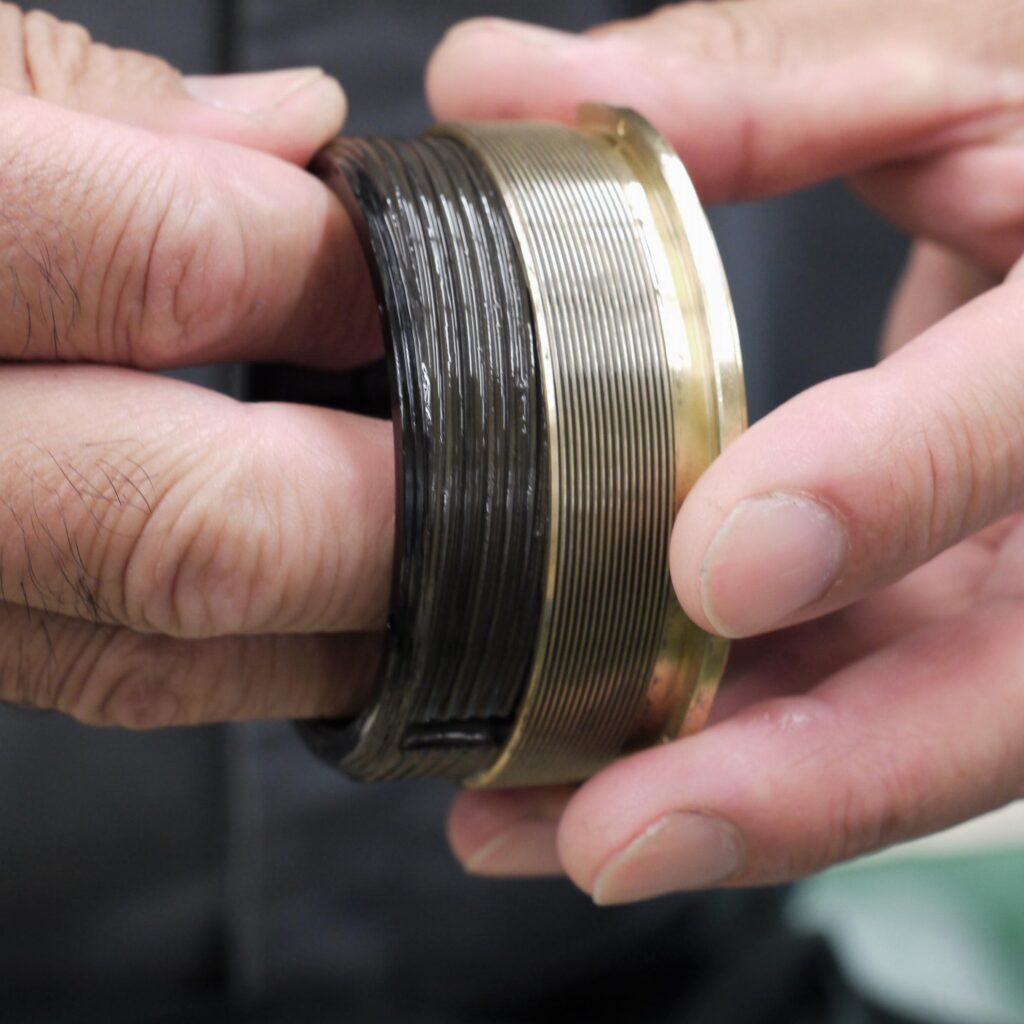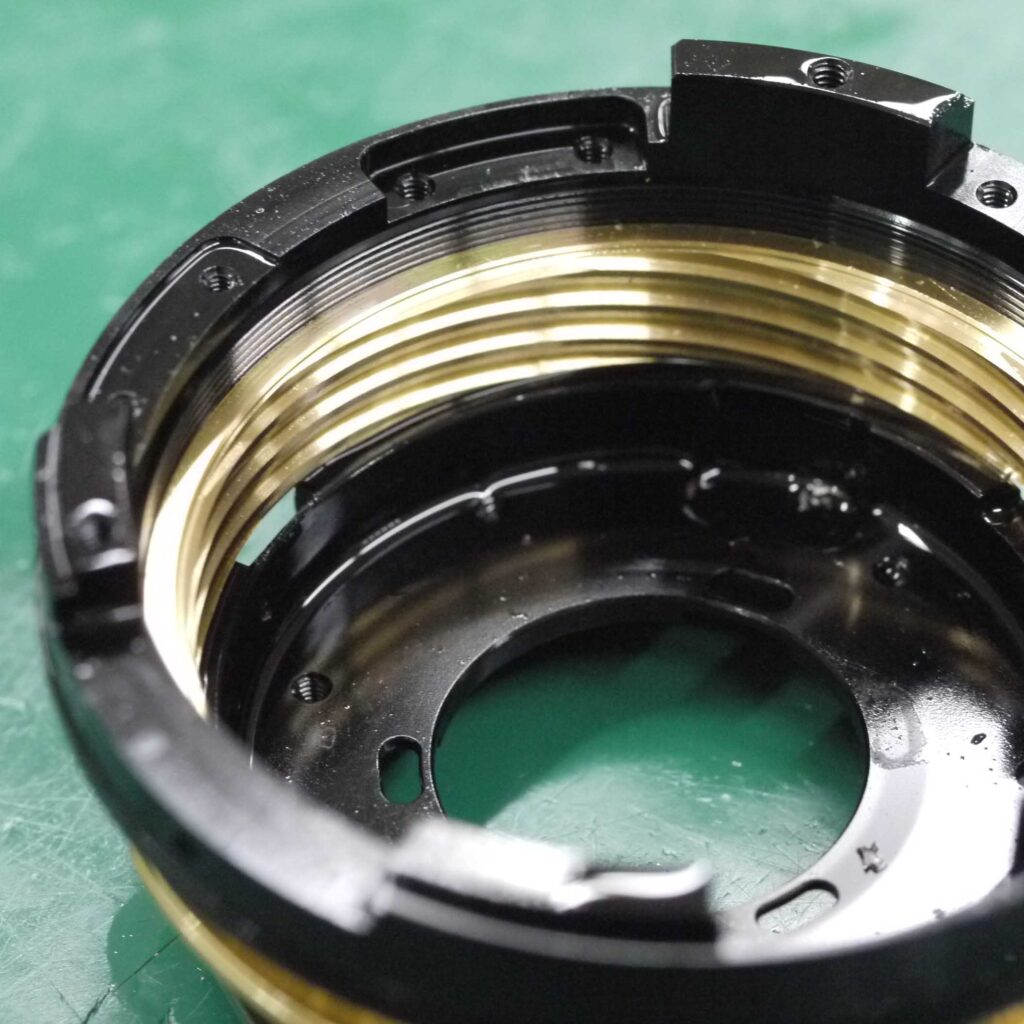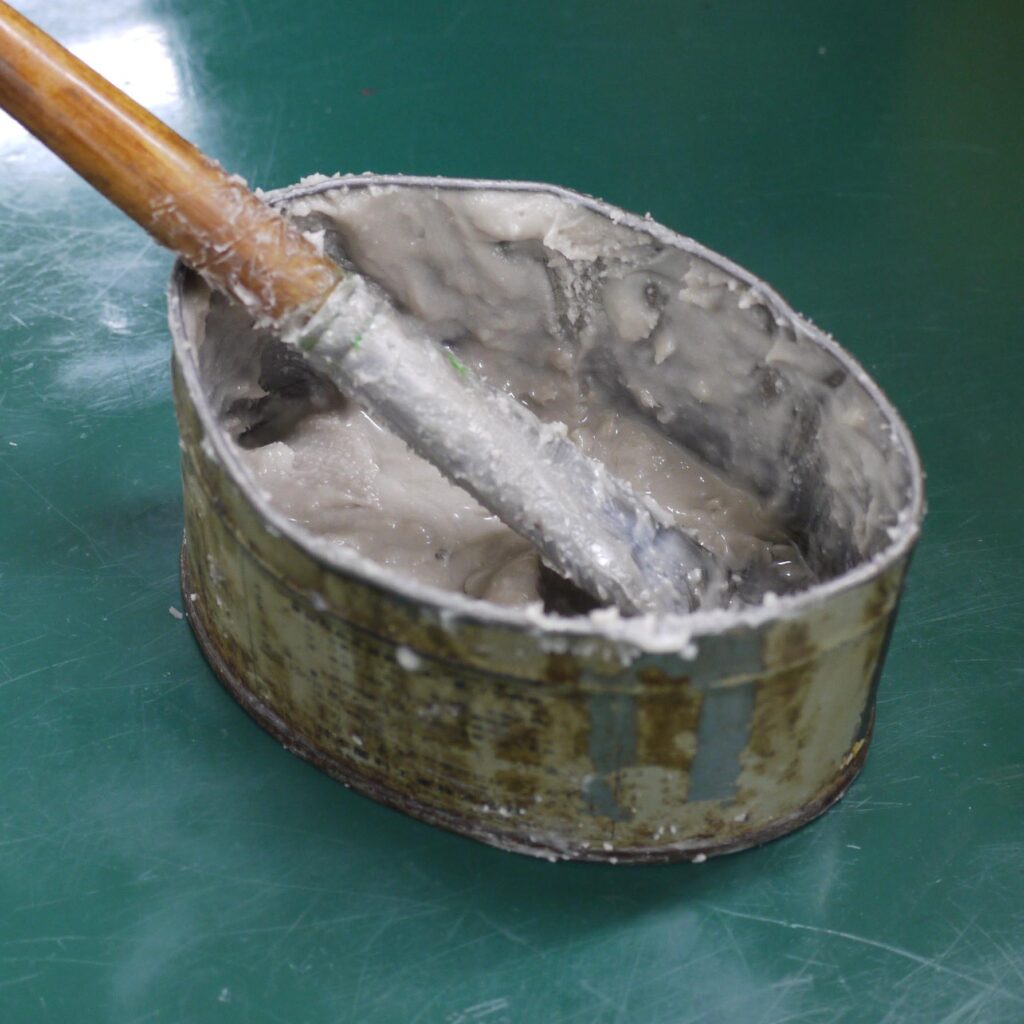Helicoid lapping

With skilled hands, two barrel parts are screwed in and out a number of times. Then, when the feeling is just right, they are washed and sent to the assembly process. Known as “lapping,” this process carefully turned the two key pieces of a helicoid together. A helicoid is a mechanism that moves the lens back and forth by turning the lens barrel along a spiral groove. Different from ordinary screws, the thread of a helicoid has a trapezoidal profile and, by using a multiple start screw, the helicoid can move a lens long distances forward and backward with minimal turning. Manufacturing a helicoid with multiple start screw requires threads be cut to equidistant pitch, so it takes much more precision than with general single start screw.

Though motor-driven focusing work may enable problem-free movement, rough spots in working can be easily detected by the delicate touch of fingertips. Slight dimensional differences in the matching parts or burrs on surfaces and edges affect operating feel and can make the focus ring seem as though it is catching on something, not moving smoothly enough. That’s why we at Cosina do the lapping work by hand.

By coating the grooves of a helicoid with a lapping abrasive, turning the mating parts back and forth a number of times and intuitively monitoring how the turning feels to make the grooves engage very smoothly. Yet, overdoing it can excessively widen the marching surfaces, which inversely causes parts to be loose and rattle. Lapping shall be stopped at the point where the helicoid’s movement feels best, assuming each thread was charged with grease. This delicate judgment call between “too much or too little” gives a focus ring a consistent feel when moving from close focus to infinity.
All of the high-end interchangeable lenses that we make go through this hand lapping process before final assembly and delivery to the customers.